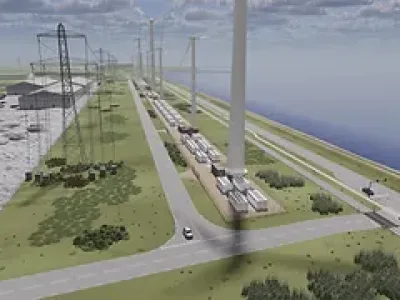
‘Zero accidents’ autonomous sensing platform unveiled
The NPS 500, says the company, is the world’s first all-in-one deeply integrated multi-model sensor system focused on Level 4/5 autonomy. The sensor-fused system precisely interconnects the company’s solid-state MIMO LiDAR, super-resolution SWAM radar, and cameras to cooperatively detect and process 360° high-resolution data and is designed to give vehicles the ability to prevent all accidents.
The densely integrated sensor system is designed to enable vehicles to see around corners and over 500 meters of range with ultra-resolution accuracy together with highly adaptive frame rate. The NPS 500 breakthrough capabilities, says the company, make it 10x more reliable than currently announced sensor solutions.
“Our goal to prevent all transportation accidents is the holy grail for autonomous vehicles,” says Behrooz Rezvani, founder and CEO of NPS. “We are the sensing system behind the Zero Accidents Platform for large volume deployment at affordable cost. Existing technologies are not sufficient to achieve this paradigm, so we created our own more powerful LiDAR and radar. Our AI-driven sensor-fusion system processes this ultra-high resolution data to create the safest and most reliable solution in the market today. The NPS 500 slashes time-to-market for autonomous vehicle manufacturers, while being the most cost-effective.”
The NPS 500, says the company, enhances and combines the strengths of LiDAR, radar, and cameras to create a platform that leverages the capabilities of each technology, while addressing today’s challenges of Level 4/5 autonomy, including:
- Cameras: Provide high resolution images, but lack depth information and depend on lighting conditions
- Radar: Measure velocity with great precision, but have lower resolution than LiDAR and are vulnerable to interference from other radars
- LiDAR: Provide super precision depth information, but its performance and reliability degrade in adversarial, weather and light conditions, and it can get occluded fairly easily
NPS 500 is offered as having the following features:
- LiDAR: Revolutionary new solid-state MIMO-LiDAR architecture doubles range ≥ 500 meters with super resolution and adaptive multi-beam search
- Radar: New class of radar technology with 10x better detection reliability, simultaneous, multi-band 360° FoV, 70x better against other radar signal interference
- Software: First ever AI fusion technology to “see-around-the-corner”
- Chips: 650 Tb/s sensor-data processing on network of tightly connected custom signal processing chips
The platform’s benefits are offered as the following:
- Range = 500 meters @ 10% reflectivity
- Doubling the reaction time currently available LiDAR
- Significant increase in sensor data reliability
- See-around-the-corner capabilities
- Anticipating pedestrian’s movement well before reaching cross section
- Detecting moving objects approaching intersections well in advance
- Built-in redundancy for maximum reliability in harsh environments, bad driving and tough terrains
- Low maintenance, automakers can efficiently rely on NPS sensors once the vehicles leave the dealership
- Multi-beam adaptive scan up to 100 FPS to detect and track subtle movements
- See thru occlusion
- Reduced time to market
- Cost effective
- Low CAPEX and OPEX for OEM customers
For the bigger picture, the company quotes Pierrick Boulay, senior analyst at market research & strategy consulting company Yole Développement, who says, “LiDAR, radar and cameras will all play significant roles in creating the ideal autonomous driving platform and there is no question that tightly connected sensors with onboard data fusion for automated driving enables more functionalities. This direction is unique and is likely to succeed in a market that could reach $25B in 2025* for sensing and computing in both ADAS and robot vehicles.”
Related articles:
Self-driving startup unveils L4 autonomous sensing solution
Sensor fusion: A critical step on the road to autonomous vehicles
‘Deathproof’ cars by 2020, says Volvo
Analog Devices discusses autonomous vehicle sensors
Autonomous platform offered as future of smart travel, residence
 If you enjoyed this article, you will like the following ones: don't miss them by subscribing to :
eeNews on Google News
If you enjoyed this article, you will like the following ones: don't miss them by subscribing to :
eeNews on Google News




